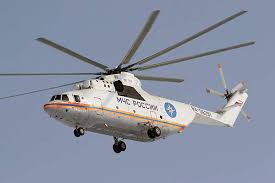Stamp: Red Cross helicopters and Morse code (Zaire 1982)
Red Cross helicopters and Morse code (Zaire 1982)
08 February (Zaire ) within release Telecommunication and health goes into circulation Stamp Red Cross helicopters and Morse code face value 1 Zairean makuta
| Stamp Red Cross helicopters and Morse code in catalogues | |
|---|---|
| Michel: | Mi:CD 747 |
| Yvert et Tellier: | Yt:CD 1064 |
| Belgium: | Bel:CD 1125 |
Stamp is vertical format.
Also in the issue Telecommunication and health:
- Stamp - Red Cross helicopters and Morse code face value 1;
- Stamp - Doctor and Telephone face value 25;
- Stamp - Satellite connections face value 90;
- Stamp - Broadcasting face value 1;
- Stamp - Telex face value 1.70;
- Stamp - Television face value 3;
- Stamp - Data processing face value 4.50;
- Stamp - Infant and portophone face value 5;
Stamp Red Cross helicopters and Morse code it reflects the thematic directions:
A ship is a large watercraft that travels the world's oceans and other sufficiently deep waterways, carrying passengers or goods, or in support of specialized missions, such as defense, research and fishing. Historically, a "ship" was a sailing vessel with at least three square-rigged masts and a full bowsprit. Ships are generally distinguished from boats, based on size, shape and load capacity.
Telecommunication, often used in its plural form or abbreviated as telecom, is the transmission of information with an immediacy comparable to face-to-face communication. As such, slow communications technologies like postal mail and pneumatic tubes are excluded from the definition. Many transmission media have been used for telecommunications throughout history, from smoke signals, beacons, semaphore telegraphs, signal flags, and optical heliographs to wires and empty space made to carry electromagnetic signals. These paths of transmission may be divided into communication channels for multiplexing, allowing for a single medium to transmit several concurrent communication sessions. Several methods of long-distance communication before the modern era used sounds like coded drumbeats, the blowing of horns, and whistles. Long-distance technologies invented during the 20th and 21st centuries generally use electric power, and include the telegraph, telephone, television, and radio.
A helicopter is a type of rotorcraft in which lift and thrust are supplied by horizontally spinning rotors. This allows the helicopter to take off and land vertically, to hover, and to fly forward, backward and laterally. These attributes allow helicopters to be used in congested or isolated areas where fixed-wing aircraft and many forms of short take-off and landing (STOL) or short take-off and vertical landing (STOVL) aircraft cannot perform without a runway.
Aviation is the practical aspect or art of aeronautics, being the design, development, production, operation and use of aircraft, especially heavier than air aircraft. The word aviation was coined by French writer and former naval officer Gabriel La Landelle in 1863, from the verb avier (synonymous flying), itself derived from the Latin word avis ("bird") and the suffix -ation.




